Keep Your Pool Cool: Effective Tips for Beating the Summer Heat
May 07th, 2024
May 07th, 2024
The sun blazes overhead, casting a relentless glow that turns even the most inviting pool into something of a tepid bath. You dip a toe in, hoping for a refreshing escape, but instead, you're met with disappointment. A heated swimming pool may sound luxurious, but when the summer heat turns it into a lukewarm stew, it’s time to consider ways to bring that temperature down to a more refreshing level.
For many pool owners, this isn't just a minor inconvenience. I recall a sweltering July when my backyard became a hosting ground for a weekend barbecue. The pool, intended as the centerpiece of relaxation, was instead met with reluctance as guests looked for shade rather than a swim. This common scenario is a reminder of the need for effective solutions to maintain the cool allure of our watery retreats.
Options abound, from creative shading techniques to advanced cooling systems. Each method comes with its own set of advantages and considerations, tailored to different budgets and pool types. Whether utilizing nature's own cooling agents, such as strategically placed trees or investing in technology like heat pumps, finding the right solution can ensure your pool remains an oasis rather than a mirage. With a bit of planning and a dash of ingenuity, you can transform your pool into the ultimate summertime sanctuary.
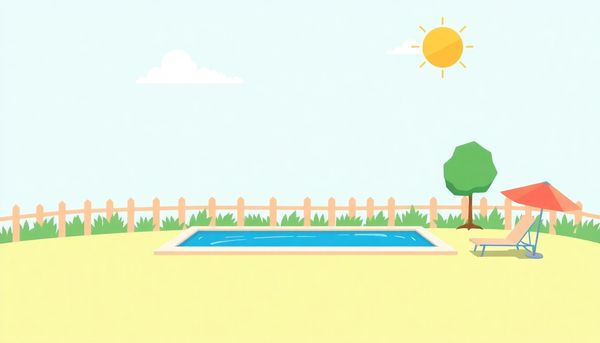
While the sun retreats and the evening breeze whispers across your yard, there lies an overlooked strategy to tame your pool’s temperature: activating night-time filtering. As day fades to night, the air cools considerably. This cooler air, combined with the movement of water, sets the perfect stage for reducing pool temperatures without extravagant measures or ice.
Imagine this: as the stars twinkle above, your pool filter hums gently, circulating water that eagerly surrenders its stored heat to the cooler atmosphere. The process is simple yet effective. By running your filter during these cooler periods, you encourage natural evaporation, which can subtly but significantly reduce the water's heat. This refreshing morning surprise awaits you, all thanks to the effort exerted under the cloak of night.
My neighbor, Sarah, swears by this method. After a sweltering day, she flips the switch as dusk descends, allowing her pool to greet the morning with a chill that echoes mountain streams. She loves the way her pool feels like a secret oasis, ready to revive her after a long, hot day.
This nocturnal tactic doesn’t demand drastic actions or costly equipment. It merely harnesses the natural drop in temperature during the night. It's a straightforward, eco-friendly approach, perfect for those who appreciate simplicity paired with effectiveness. So, next time you find yourself lamenting over warm waters, consider letting the night work its cooling magic.
As the sun sets and the day's heat begins to dissipate, your pool has the chance to breathe. One of the simplest yet most effective ways to cool your pool overnight is to harness the naturally cooler night air. By running your pool's filtration system during these cooler hours, you encourage the water to circulate and interact with the refreshing night breeze, enhancing evaporation—a natural cooling process.
Every year, my backyard becomes a haven for nighttime gatherings, and I've learned that a gentle breeze can make a world of difference in pool temperature. Clearing away any barriers, like overgrown shrubs or tall poolside umbrellas, allows the wind to sweep across the water's surface, facilitating even greater cooling. I’ve found that repositioning loungers and patio furniture lets the cool air flow unimpeded, turning the pool into a pleasant retreat by morning.
For those with solar heating systems, nocturnal cooling can be a game changer. Running pool water through solar panels during the night can cleverly use the cooler air to reduce water temperature. It’s an efficient way to leverage existing equipment for dual purposes—both heating and cooling.
Incorporate these small but impactful changes, and you’ll notice a significant dip in your pool’s temperature. Enjoy a refreshing swim under the stars, knowing you've maximized nature's gift of night-time cooling.
When nighttime rolls around, the temperature drops, offering a respite from the scorching sun. This natural shift presents a perfect opportunity for pool owners to tap into nocturnal cooling techniques. By cleverly utilizing the cooler nighttime air, you can help reduce your pool's temperature without resorting to more expensive methods.
Begin by running your pool's filtration system overnight. Doing so allows cooler air to interact with the water circulating through your equipment. The result is a refreshing swim the next morning—a welcome contrast to the daytime heat. While this method won't turn your pool into an ice bath, it does make a noticeable difference, giving the water a cooler touch.
If you're looking to amplify this effect, consider the use of solar panels—yes, the very ones typically used for heating. At night, when the air temperature dips below your pool's, rerun water through these panels. Their heat-dissipating properties work both ways, effectively cooling the water before it returns to the pool. It's a sustainable strategy, harnessing existing resources without adding extra gadgets to your setup.
Additionally, encouraging air movement across the pool's surface aids in cooling. Removing obstructions such as overhanging branches or tall fences not only invites a gentle breeze but also ensures evaporation, a natural cooling process. By combining these nocturnal tactics, your pool becomes a more inviting oasis, even in the height of summer.
Wind isn't just for kite flying or sailboats; it can be a silent savior for your overheated pool. When leaves rustle in the breeze, they might be whispering the secret to cooling your water naturally. Think about it: the more air that circulates around your pool, the cooler it will become. This isn't just theory; it's a practical approach many pool owners overlook.
Start by assessing the landscape around your pool. Tall hedges or dense trees, while offering privacy and shade, can also act as barriers to airflow. If you’ve ever swapped stories with a neighbor over the fence about gardening, consider discussing strategic trimming instead. By pruning back some of those branches or even removing a few non-essential shrubs, you can invite the breeze to dance across your pool’s surface, whisking away heat in its wake.
Furthermore, you might contemplate setting up a few fans around the pool area. While this might sound like an unconventional move, strategically placed fans can simulate a natural breeze, especially during those sweltering afternoons. A friend of mine once set up an outdoor ceiling fan under his poolside pergola, and he swears by the difference it made.
In the end, it’s about creating an environment where your pool can breathe. Let the wind be your ally in this cooling endeavor, ensuring a refreshing plunge every time you take the dive.
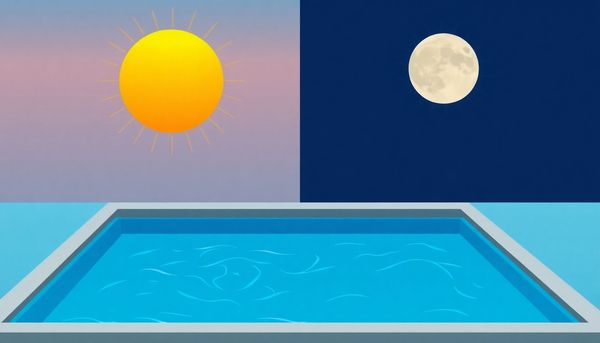
Once, while hosting a summer pool party, an unexpected heatwave turned the water into something resembling bathwater. A friend jokingly suggested dumping ice into the pool—as if our backyard had suddenly become a colossal cocktail glass. At first, we laughed, but then curiosity got the better of us. Could it actually work? Surprisingly, using ice for quick cooling is not just a party trick but a plausible strategy, especially if you have access to bulk ice at an affordable rate.
The key to this technique lies in understanding the science of temperature transfer. Ice absorbs heat from its surroundings as it melts, which can effectively reduce the water temperature. For instance, cooling a 10,000-gallon pool by 5 degrees demands a hefty 2,187.5 pounds of ice. This might sound massive, but if you have connections, say, with a local ice supplier, this could become a fun, albeit temporary, solution to overly warm pool water.
The visual impact alone is worth the effort. Imagine your guests' faces as a truckload of ice cascades into the pool, creating a misty spectacle. However, exercise caution: this method is best for occasional use, considering both cost and practicality. While it won't replace a dedicated cooling system, an icy plunge might just be the summer surprise that makes your pool party unforgettable.
Transforming your pool into a personal oasis doesn't just keep it cooler; it adds a playful splash of character to your backyard. Fountains and slides are handy additions that work wonders in lowering pool temperatures. I once installed a simple fountain attachment to the return jets in my own pool, and it became a family favorite almost overnight. As water cascades into the air and back into the pool, it not only creates a visually pleasing effect but also encourages evaporation—a natural cooling process.
A slide, meanwhile, serves a dual purpose. Beyond the fun it brings, the constant movement of water as people swoosh down creates a similar cooling effect. The circulating water combined with the added aeration from the slide helps keep the temperature in check. It’s like having your own little water park right at home.
Moreover, these features are easier to install than you'd think. Many fountains are plug-and-play, connecting directly to your pool's existing pump system without the need for extensive modifications. Slides might require a bit more planning and space, but the delight they bring justifies the effort. When summer days get sweltering, and your pool starts feeling more like a bathtub, these simple additions can turn the tide, making your pool a refreshing escape once more.
A swimming pool, refreshing as it may be, can quickly become a lukewarm vat under the relentless sun. One often overlooked tactic to cool it down involves removing those wind-blocking obstacles around the pool. Trees, fences, or even tall hedges might seem like the perfect privacy shields, but they also prevent the natural, cooling breeze from skimming over your pool’s surface.
Years ago, I helped a friend transform his backyard into a more pool-friendly environment. His pool area was surrounded by lush greenery, a paradise for privacy but a sauna for swimming. By selectively trimming back branches and repositioning some of the taller potted plants, we allowed the wind to flow freely. It was astonishing to see the difference that made in pool temperature. What once felt like bathwater began to regain its refreshing chill, thanks to the unimpeded breeze.
This approach doesn’t require drastic measures, just a bit of strategic planning. You can maintain aesthetics while ensuring functionality. Consider the direction of prevailing winds and adjust your landscape accordingly. Freeing the breeze can be a cost-effective and simple solution, making those summer plunges into your pool feel far more invigorating. Embracing this method may also save you from contemplating more unusual cooling strategies, like that truckload of ice!
Reversible heat pumps might seem like a high-tech luxury, yet they offer a smart solution for tempering sweltering pool waters. Unlike traditional methods, these pumps provide dual functionality: they can warm your pool in chillier months and cool it down during the blazing summer heat. It's akin to having a versatile thermostat for your backyard oasis.
Years ago, my neighbor, Jim, faced the challenge of a perpetually warm pool that felt more like a spa than a refreshing dip during July. After some research, he installed a reversible heat pump. To his delight, it transformed his pool into the neighborhood's favorite summer retreat. He often marvels at how the system circulates the pool water through a refrigeration cycle, effectively drawing heat out and releasing it into the air. It's a seamless process that works quietly and efficiently.
Of course, it requires an initial investment, but it's worth considering the long-term benefits. Besides cooling, reversible heat pumps are energy-efficient, which means they can save you money on electricity bills over time. They harness the surrounding air temperature, making them more eco-friendly compared to traditional cooling systems. If you’re looking for a sustainable way to keep your pool invitingly cool, exploring the option of a reversible heat pump could give you that perfect balance of comfort and cost-effectiveness.
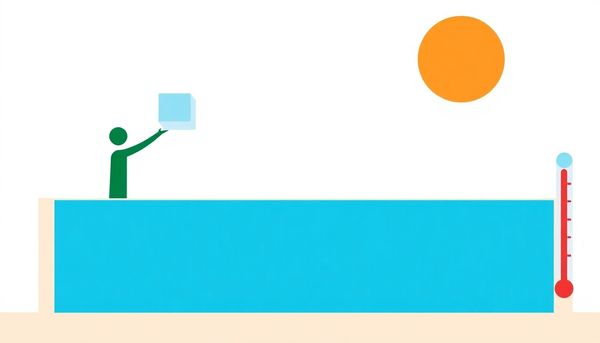
Sweltering heat can turn your pool into an oversized bathtub, and nothing is more disheartening during a heatwave. One often overlooked method to combat this involves clearing obstacles around your pool to improve airflow. Consider the natural flow of air as your ally. Trees, shrubs, and fences can serve as barricades, trapping heat and stifling the refreshing breezes that might lower the temperature of your pool water.
In my own backyard, I once had a towering wall of bamboo that seemed like a privacy blessing until mid-summer rolled around. The heat was suffocating, and my pool felt more like a hot tub. After some deliberation, I trimmed back the bamboo and added a trellis to allow more air to circulate. The difference was noticeable; cooler breezes made the water far more bearable.
Additionally, think about the positioning of patio furniture, umbrellas, or even outdoor grills that might act as blockades. Rearranging these elements can create pathways for the wind to dance more freely across the surface of your pool. By opening up these channels for airflow, you invite nature’s own cooling system to lend a hand, making for a more pleasant swimming experience without resorting to drastic measures. As a bonus, this approach is budget-friendly and requires just a bit of sweat equity.
Despite the allure of a sun-drenched backyard oasis, sometimes a pool can become more of a tepid bath than a refreshing retreat. Among the many strategies to cool things down, one often overlooked solution is managing the landscape around your pool. Trees, shrubs, and fences can act as barriers, preventing the natural cross-breeze from reaching the water's surface. Without this airflow, the once-inviting water can quickly become uncomfortably warm.
Consider my own experience: my backyard, surrounded by tall hedges, transformed my pool into a summertime hot tub. I noticed that on particularly breezy days, the areas where the wind could sneak through were noticeably cooler. This was my cue to clear a path for the breeze. After carefully trimming back some overgrown branches and removing a section of fence, the wind began to play its role, sweeping across the pool and helping to regulate the temperature.
Additionally, allowing wind to circulate can have other benefits. It can help to disperse any unwanted humidity lingering around your pool area, making your entire backyard feel fresher. So, before reaching for expensive gadgets or extravagant solutions, take a moment to assess your landscape. A few strategic changes might just invite that perfect breeze your pool has been missing.
Whispering through the leaves, a gentle breeze can be nature's best gift to your pool. Harnessing airflow through strategic landscaping not only adds a touch of elegance to your backyard but also plays a significant role in keeping pool temperatures lower. By thoughtfully arranging your garden, you can invite cool winds to dance across the water’s surface, providing a natural and effective cooling method.
Start by evaluating the plants and structures around your pool. Dense foliage or tall barriers might be shielding your oasis from the refreshing gusts it desperately craves. Consider trimming back trees or reshaping hedges to create pathways for air to circulate freely. This might require a bit of pruning or even replanting, but the reward is a cooler swimming experience on those scorching summer days.
Diversify with ground cover plants and low shrubs, which can help reduce heat reflection from hard surfaces like patios. Plants such as lavender or ornamental grasses can add both beauty and functionality, offering shade without blocking airflow. Remember, a well-planned garden can significantly enhance the microclimate around your pool.
A friend of mine swears by her clever use of trellises adorned with climbing vines. These not only provide a partial shade but also allow breezes to pass through, maintaining a pleasant environment around her pool. By thoughtfully adapting your landscape, you’ll find that nature itself can become a partner in keeping your pool refreshingly cool.
As the day fades and the air around us cools, an opportunity arises to counteract the intense heat that has been baking your pool all afternoon. Embracing the natural drop in temperature during the night can significantly aid in cooling down your swimming pool, a technique often overlooked yet incredibly effective. I remember trying this out with my own backyard pool; it was a revelation to see how much of a difference it made, simply by utilizing the cooler night air.
Begin by running your pool's filtration system after the sun sets. This simple step leverages the cooler nocturnal temperatures to help chill the water. During the night, the water running through the filter is exposed to the cooler air, promoting evaporation—a natural cooling process. On particularly warm nights, you can enhance this effect by incorporating additional cooling techniques, like fountain attachments to your return jets. These not only circulate the water but also add an aesthetic touch to your pool setting.
Solar panels, typically associated with heating, can also be employed for cooling when the sun is down. By circulating the pool water through the panels at night, you turn them into efficient radiators that shed heat from the water back into the cooler night air. This method harnesses the dual functionality of your existing setup, turning a heat wave into a manageable situation. Each morning, you may find your pool slightly cooler and far more inviting, ready to refresh your senses as you take your first dive of the day.
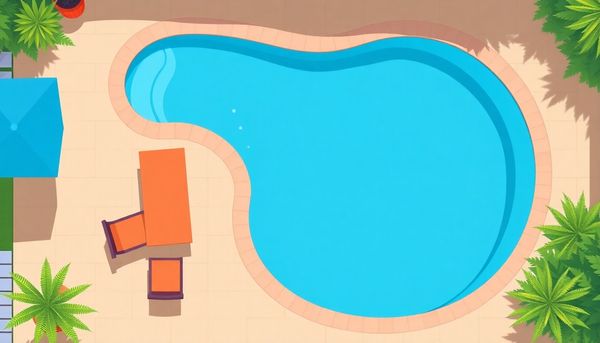
Staring into the shimmering waters of a pool, one might not immediately consider a heat-pump as a tool for cooling rather than warming. Yet, the adaptable nature of a reversible heat-pump turns it into a year-round ally for pool owners. On a particularly scorching day, a friend of mine shared his experience of transforming his pool from a hot tub back into an oasis of refreshment using this ingenious device.
Reversible heat pumps operate much like air conditioners for your pool. By reversing their function, these systems can extract heat from the pool water and release it into the air, effectively lowering the water temperature. It's like giving your pool a cool breeze on a blistering summer afternoon. Installation might seem daunting, but in the long run, the convenience and comfort it provides are unmatched.
Moreover, these systems are known for their energy efficiency. Unlike the energy-guzzling systems of the past, modern heat pumps make use of ambient air temperature, ensuring minimal environmental impact. My friend, always keen on eco-friendly solutions, found his energy bills barely moved after installing one.
For those living in regions where summer temperatures reach sweltering highs, a reversible heat-pump is more than just a luxury—it's a means to reclaim enjoyment in your pool. In the end, the investment pays off in the form of endless cool dips, turning a simple pool into a refreshing personal retreat.
Finding the perfect spot for your swimming pool can be a game-changer in maintaining a refreshing dip. Rather than simply settling for convenience, consider the microclimate of your backyard. Pools basking in full sunlight all day are more prone to turning into oversized hot tubs. Instead, aim for a location that balances sun and shade. Mornings are perfect for a touch of sunlight, but by afternoon, perhaps some natural or artificial shade can lend a hand in keeping the waters cool.
Take my neighbor's pool as an example. Nestled beneath a canopy of tall oaks, it benefits from a dance of dappled sunlight in the morning and full shade by early afternoon. The result is a pool that remains invitingly cool, even during the height of summer's wrath. Such strategic placement leverages natural breezes and cooling effects that dense foliage can provide without completely blocking out the sun.
Moreover, the orientation in relation to prevailing winds matters. A pool positioned to catch the breeze can harness the cooling power of wind, naturally lowering water temperatures. Imagine a light breeze skimming across the surface, whisking away the heat like a gentle whisper. By playing a little strategic chess with your pool's position, you can avoid the hassle of artificial cooling methods and ensure that every swim is a retreat into refreshing bliss.
When the summer sun turns relentless, transforming your serene backyard pool into a tepid bath, there's no need for despair. Embrace the power of night-time filtration. By running your pool's filter under the moonlight, you allow the cooler evening air to gently encourage evaporation, subtly refreshing your water by morning. This method is a quiet night owl in the world of pool cooling techniques, providing a subtle yet effective temperature drop.
If subtlety isn't your style, consider the bold move of introducing water features. A fountain not only adds aesthetic charm but also agitates the water surface, encouraging aeration and cooling. Picture the gentle cascade of water from a small waterfall or the playful arc of a fountain—each splash working to whisk away heat. The movement keeps the water from stagnating and can transform your pool into a cool oasis.
For the tech-savvy pool owner, leveraging your solar heating system for nocturnal cooling can be a game-changer. By circulating water through your solar panels during the cool of the night, you harness their capacity to expel heat instead of absorbing it. This dual-purpose use maximizes the efficiency of your existing setup, offering a clever solution to beat the heat without additional investment.
Lastly, clearing any wind obstructions allows natural breezes to assist in cooling, a simple yet often overlooked strategy. By considering your pool's environment and equipment creatively, you can turn a potential summer swelter into a refreshing retreat.
In the quest to transform your pool into a refreshing retreat, maximizing airflow can play a pivotal role. Have you ever considered how the gentle caress of a breeze can significantly affect pool temperatures? By ensuring optimal airflow around your pool, you harness nature’s own cooling system. Clear away any dense shrubbery or towering fences that might obstruct the wind. These barriers, though sometimes aesthetically pleasing, can trap heat and prevent the natural cooling effect of air currents.
Imagine sitting beside a friend who shares tales of their own pool-cooling journey. They might recount how, after pruning back overgrown flora and relocating bulky outdoor furniture, the difference was palpable. The pool water, no longer a lukewarm bath, greeted morning swimmers with a crisp, revitalizing chill. Such firsthand experiences underscore the simplicity and effectiveness of this method.
Moreover, enhancing airflow doesn't just mean clearing physical barriers. Consider positioning fans strategically around the pool area. Although this may sound unconventional, these fans can emulate breezy conditions, constantly circulating air across the water's surface. This practice, often overlooked, can be particularly effective during the stagnant heat of summer days.
In essence, keeping your pool cool through optimal airflow is less about drastic measures and more about harnessing what’s readily available. By creating a pathway for natural breezes and supplementing with fans, you invite a refreshing change to your aquatic sanctuary.
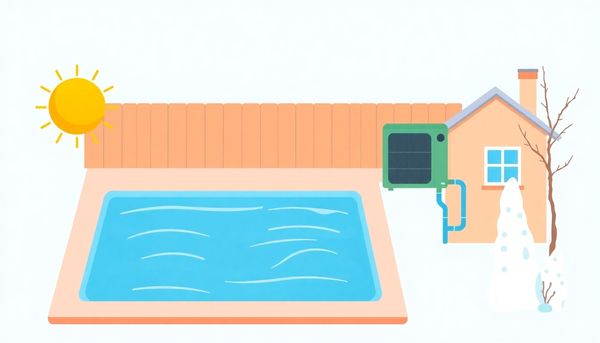
As the sun sets and the evening air becomes a gentle breeze, a lesser-known method can work its magic on your pool—nocturnal solar cooling. This technique turns your solar heating system into an unexpected ally in the quest for refreshing waters. By circulating your pool water through solar panels during cooler night hours, the system that once harnessed sunlight to warm your pool can now dissipate heat, drawing warmth away from the water. It's like nature's way of balancing the scales, utilizing the same technology to offer relief from the sweltering daytime temperatures.
One evening, my friend decided to try this method. With a skeptical glance at her solar panels, she set the system to run overnight. To her surprise, the next morning felt like a refreshing dip in a mountain stream. The method didn’t just restore comfort; it brought back the joy of swimming without the heat-induced lethargy.
To maximize this cooling effect, ensure the panels are unobscured by leaves or debris, and give them room to breathe. This allows ambient air to whisk away the heat effectively. Embracing nocturnal solar cooling means using what you already have in innovative ways—no ice deliveries needed. Your pool becomes a sanctuary once more, ready to offer respite from the heat without extra cost or effort.
Amidst the shimmering sunlit days, maintaining pool coolness can appear a daunting task. However, your pool filter holds untapped potential in this regard. Running your filter during the cooler nighttime hours is a simple yet effective strategy. As the temperature drops, the air becomes less saturated, promoting the natural evaporation process. This evaporation helps shed some of the pool’s heat, leaving the water feeling more refreshing come morning.
Consider the scenario of a friend who swore by this technique during a particularly blistering summer. By running their pool filter from dusk to dawn, they noticed a significant decrease in water temperature, making early morning swims invigorating rather than tepid. They found that not only did the pool feel cooler, but the water also stayed cleaner due to the increased filtration time. It's a win-win.
Moreover, synchronizing your filter usage with your pool’s needs can also optimize cooling. For instance, if your pool is shaded during part of the day, running the filter during those hours can further exploit the cooler conditions. Additionally, ensure your filter is in optimal condition. A clean, well-maintained filter circulates water more efficiently, enhancing overall cooling efforts.
Embracing this simple yet strategic use of your pool filter can transform your summer swimming experience without incurring hefty expenses or resorting to unconventional methods.
While sweltering summers may turn your pool into a giant bathtub, there's a refreshing solution that combines function and fun: installing pool cooling features. One particularly effective method is adding a fountain or waterfall. These features not only create a soothing ambiance but also help in circulating the water, which can lower the overall temperature. As the water flows and splashes, it increases the rate of evaporation, thus providing a cooling effect. After all, who can resist the charm of a cascading waterfall on a hot summer day?
For those who prefer a bit more adventure, consider a pool slide. It's not just for splashes and giggles—slides also promote water movement. This continual motion keeps the water from stagnating and heating up. Such features invite family and friends for endless hours of joy, all while subtly ensuring your pool remains temperate and inviting.
If aesthetics are as important as function, think about incorporating aerators. These nifty gadgets can be attached to your pool's return jets, introducing tiny air bubbles into the water. As the bubbles rise, they whisk away heat, cooling the water effectively. Plus, the visual of aerated water has its own appeal, adding a touch of elegance to your backyard oasis.
These enhancements not only enhance the pool's allure but also ensure that your summer retreat remains a cool sanctuary amid the scorching season.
On a blistering summer day, the idea of cooling down a sweltering swimming pool may seem daunting. Yet, one surprisingly effective strategy lies in simply removing heat-trapping obstacles around the pool. Imagine the last time you noticed a gentle breeze sweep across an open field; it’s nature’s way of redistributing warmth. Similarly, if your pool is surrounded by dense greenery, fences, or hefty garden ornaments, these could block beneficial breezes that naturally lower water temperatures.
Take my neighbor's pool, for instance. Situated under a canopy of thick leaves, it became more of a warm bath than a refreshing oasis. By trimming back the overhanging branches and rearranging a few potted plants, she opened up pathways for the wind to circulate freely. The change was palpable: the pool's temperature dropped by a few degrees, transforming it into the perfect summer retreat.
It’s not just about airflow, though. Large, dark surfaces such as brick walls or asphalt can act as heat magnets, radiating warmth into your swimming area. Swapping out these surfaces for lighter, reflective materials or adding a few shade-providing structures can help mitigate the heat absorption. By thoughtfully re-evaluating the landscape and optimizing for airflow and reduced heat absorption, you can achieve a cooler, more enjoyable pool experience without major renovations or extravagant solutions.

This article provided insights into maintaining your pool. Start your pool care journey today!
Want to become a pool maintenance expert? Our free Pool School course covers everything you need to know about pool care. From basic maintenance to advanced troubleshooting, you'll learn how to:
Join over 10,000 pool owners who have already transformed their pool care routine. Get started with our free Pool School course today!